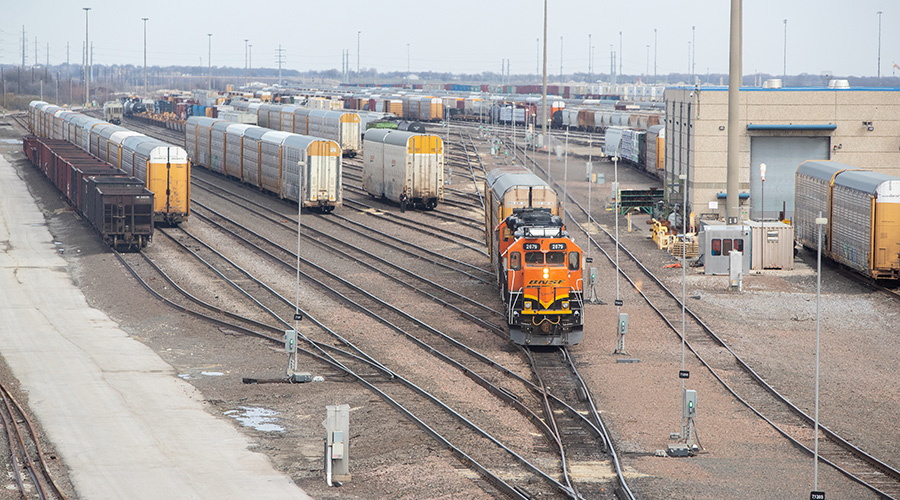UP adopts more electric vehicles to attain more sustainability goals
11/10/2022
By Jeff Stagl, Managing Editor
Like all Class Is, Union Pacific Railroad continues to seek ways to boost sustainability to reap financial, operational and environmental stewardship rewards.
The Class I has found another one, this time involving its vehicle fleet that currently numbers about 7,300 cars and trucks.
UP plans to soon begin using dozens of electric vehicles at select locations throughout its system to replace gasoline- or diesel-powered models. Over the next five to six months, 67 electric vehicles — including 50 Ford Lightning pickups and 17 Ford Mustang Mach-Es — are expected to be in operation at several facilities.
Eight electric Chevy Bolts that were purchased in 2020 already are in service in Los Angeles and Roseville, California, Chicago and North Platte, Nebraska. The vehicles primarily have been used for customer site visits and administrative purposes.
Now, UP plans to test 52 additional electric vehicles at facilities in North Platte; Houston; Little Rock, Arkansas; and Commerce, Long Beach and West Colton, California.
Once the vehicles arrive at yards and enter service, certain criteria will be monitored and reviewed, including operating expenses, charging availability, energy consumption, vehicle range and employee satisfaction, UP officials said in an email to RailPrime. For example, operating employees will test the new, larger Ford Lightning pickup trucks during yard maintenance and other field tasks.
 Eventually, 17 Ford Mustang Mach-E electric cars will enter service at several UP facilities. The Class I currently maintains a fleet of 7,300 cars and trucks systemwide. Union Pacific Railroad
Eventually, 17 Ford Mustang Mach-E electric cars will enter service at several UP facilities. The Class I currently maintains a fleet of 7,300 cars and trucks systemwide. Union Pacific Railroad“These electric vehicles will provide us with a better understanding of how electric vehicles can be used systemwide, but they are not just test vehicles. They are permanent fixtures in our fleet and will have replaced internal-combustion vehicles,” UP officials said. “We plan to continue to replace internal-combustion engines with battery-electric vehicles annually.”
Transitioning to a zero-emission vehicle fleet will help UP achieve one of its climate action plan goals: to reduce absolute Scope 1 and 2 greenhouse-gas emissions 26% by 2030 and attain net zero emissions by 2050.
“[We] believe electric vehicles hold great promise in helping us to reach our sustainability goals and reduce our carbon footprint,” UP officials said. “In addition to lowering emissions, electric vehicles also [can help in] lowering our maintenance and fuel costs.”
The railroad plans to employ third-party vendors to maintain the electric vehicle fleet rather than train employees to maintain and repair them. UP currently is working with electric vehicle charging vendor SemaConnect to install charging stations at seven locations over the next year, including facilities in North Platte, Long Beach, Roseville, North Little Rock and Houston.
As the vehicle market and electric technology progresses, the Class I will continue to consider employing more electric vehicles or those powered by other sources of sustainable energy to help lower operating costs and emissions.
“We’re excited to move toward utilizing more zero-emission vehicles,” UP officials said.


